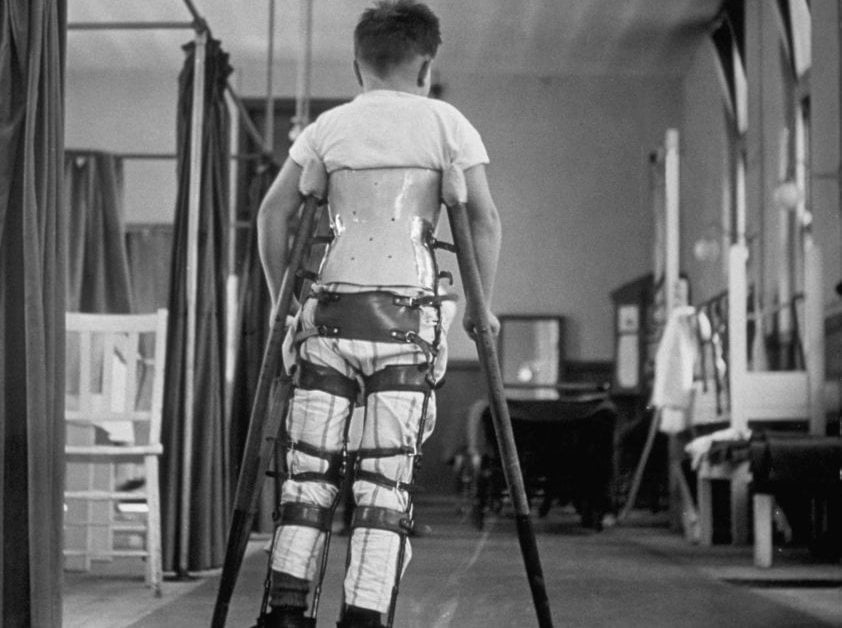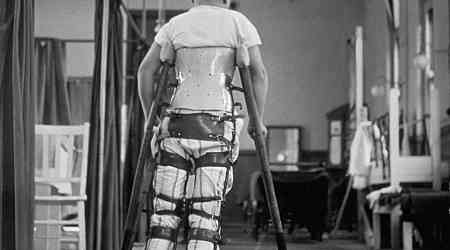
Last month, Robert F. Kennedy Jr.’s lawyer, Aaron Siri, petitioned the U.S. Food and Drug Administration to revoke approval of the polio vaccine. Lobbying to stop vaccination for polio is like advocating to remove fresh water and sewers from our cities. If we stop vaccinating for polio, we would return to a daily life filled with death, disease, and disability that is nightmarish to even contemplate.
[time-brightcove not-tgx=”true”]As a physician, I already knew about the short and long-term effects of polio and the terrible, life-long, paralysis it can cause. But while researching and writing a book about the history of the battle against polio, the stories became real. Many people I interviewed recalled how their parents broke down in tears of relief at the news in 1955 that a polio vaccine was finally available. I often think about this graph which demonstrates the remarkable effectiveness of the vaccine in stamping out polio in the U.S. Because of its effectiveness, the polio vaccine is typically viewed as one of the greatest public-health achievements of the 20th century.
Due to vaccines, we inhabit a world where relatively few are visibly affected long-term because of an infectious disease. Only some infectious diseases leave behind permanent, highly visible, physical manifestation after an acute illness. Two of the most prominent were smallpox and polio—both largely conquered in the U.S. with vaccines. Before the smallpox vaccine, many people bore deep scars on their faces and bodies (if they survived at all). And those who grew up before the polio vaccine was available have memories of children returning to school in leg braces, requiring crutches, or using a wheelchair due to paralysis after a bout with the virus. Back then, such sights were ubiquitous—a constant reminder of the power of an infectious disease to permanently alter a life.
I have spoken to dozens of polio survivors including 81-year-old Ina Pinkney. She contracted polio when she was 18 months old. Known as the “Breakfast Queen of Chicago,” Pinkney ran a very successful restaurant for more than 20 years. But she also had to navigate restaurant kitchens walking with a limp, worrying about keeping her balance since one leg is shorter than the other. For roughly 80 years, she has coped with the aftermath of a polio infection, including the late effects of polio, called post-polio syndrome. She now needs a wheelchair or mobility scooter to get around.
A documentary made by a Danish polio survivor, Niels Frandsen, titled, “The Epidemic: I don’t remember anything, but I’ll never forget” explores this topic. Frandsen’s haunting title encapsulates the experience of countless people. Many were attacked when they were still too young to have any memory of the acute illness. But their entire lives have been affected by physical paralysis.
To be sure, other infections can cause invisible scars. For instance, mumps can cause sterility and hearing loss. As anyone who has read Little Women knows, untreated streptococcal infections can lead to damage to heart valves, and heart failure. And more recently, we have seen how those with Long COVID often struggle with symptoms such as fatigue and brain fog. But one of the challenges with invisible disability and disease is that it does not create a constant societal reminder of the dangers of infections.
The reasons for vaccine hesitancy and denial are complex. But our very success against infectious diseases has become part of the problem. In particular, the complacency bred by the lack of daily, visible reminders of the consequences of these diseases has led us to a place and time when a man such as Siri can argue, with a straight face, to revoke the polio vaccine. I am relieved that smallpox was completely eradicated in the U.S. long before men like Siri and Kennedy were old enough to meddle in important public health measures.
We need more than just Mitch McConnell speaking out in favor of the polio vaccine. McConnell is one of hundreds of thousands of polio survivors who live in the U.S. However, many are now elderly and therefore less “visible” to the general population. We must amplify their voices and their experiences.
It’s not just the survivors of polio themselves who have stories. Everywhere I go to speak about polio I find that many people have been touched by the disease: the death of a parent, or an uncle who was in a wheelchair at family gatherings, or a cousin who never came back from the hospital as a child. But these stories have been relegated to scrapbooks and history books over the last 50 years due to the effectiveness of vaccines and other public health measures. Now, these stories need to be told and retold again until it is impossible for anyone in the 21st century to deny the reality of the death and disability that comes with an unchecked polio epidemic. Otherwise, a new generation will face a lifetime of preventable—and very visible—disability.



























